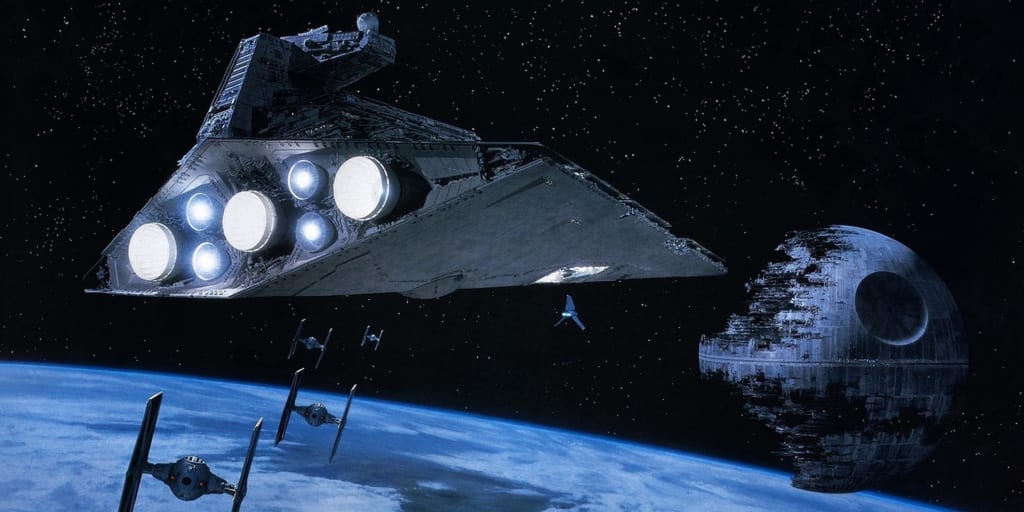How 'Rogue One' Fixes The Greatest Problem With 'Return Of The Jedi'!
Rogue One: A Star Wars Story had a stellar opening weekend, and is enjoying warm critical reception — but for this Star Wars fan, one of the most impressive things about the film is that it's a masterpiece in terms of continuity.

Rogue One: A Star Wars Story had a stellar opening weekend, and is enjoying warm critical reception — but for this Star Wars fan, one of the most impressive things about the film is that it's a masterpiece in terms of continuity. Not only has Rogue One resolved a key issue with A New Hope, it's also given us a subtle fix for one of the core continuity problems with Return of the Jedi as well!
What Was the Problem?
As we learned in Attack of the Clones, the Death Star plans have been circulating for a long time in our beloved Galaxy Far, Far Away. But for some reason, construction took a very long time indeed. In fact, the prelude novel to #RogueOne, Catalyst, tells us that construction of the Death Star began shortly after Attack of the Clones, before the Republic even became an Empire! Then-Chancellor Palpatine used the fact the Separatists had the plans to persuade key military figures that it was important the Old Republic made the superweapon first, before their enemies did.
So far, so good. Let's face it; the Empire is making a moon-sized space station. We'd expect construction to take a long time.
Then comes Return of the Jedi. Set four years after A New Hope, this film features a nearly-completed second Death Star. Yes, in the space of four years, the Empire has built another Death Star to replace the one Luke Skywalker destroyed. The one that took over two decades to build. Isn't that speed slightly... insane?
Why Did the First Death Star Take So Long to Build?

'A New Hope'. [Credit: Lucasfilm]
Together, though, Catalyst and Rogue One give us an insider's perspective on why the first Death Star took so long to build. Remember: the Old Republic began work on the Death Star because they already had the plans. As we learned in Catalyst, construction of the basic space-station was actually pretty simple; the Empire's construction works were as automated as possible, and thus moved at tremendous speed, while the Empire cared little for strip-mining asteroid fields — and, undoubtedly, worlds (we saw this as a theme of the novel A New Dawn, incidentally).
So the Empire didn't actually have problems with the construction of the Death Star. They had problems with the power source. The Death Star project was plagued with delays because they just couldn't find a power source great enough to power both the superweapon and the space station. It was Galen Erso's genius that began to unlock the secrets of the Kyber Crystals, but he was a pacifist — when he learned what was being done with his work, Galen and his family fled. At first, the Empire had to get by with trying to reverse-engineer Galen's achievements.
It took a few years, but the Empire eventually tracked Erso down, and he was captured. Galen feigned a conversion to the Empire, taking advantage of Krennic's trust in him, and set about working with the Kyber Crystals yet again. Progress was slow — he was literally on the bleeding edge of galactic science — and no doubt Galen ensured he had as many 'delays' as possible. It took years to make the reactor and the superweapon work.
The Second Death Star

'Return of the Jedi'. [Credit: Lucasfilm]
Where the first Death Star was a trailblazer, the second was a copy. The Empire didn't need to unlock the secrets of the Kyber Crystals all over again; they simply needed to duplicate Erso's work. The fact they took the quick route is indicated by the reactor's vulnerability; a single strike was still all it would take to set off a chain reaction in the reactor. No doubt they tweaked the plans to ensure the exhaust port wasn't still vulnerable, but the fact remains that the core vulnerability was still there; the Death Star's reactor was still essentially a powder keg.
Again, no doubt the Empire strip-mined asteroid fields (and indeed, entire worlds) in order to acquire the raw materials. Automated construction would have been responsible for most of the building, and could be done at speed. Any physical labor would have been done by slaves, who would have been as ill-treated as possible; no health and safety regulations would have slowed the work on the Death Star!

Credit: Lucasfilm
As you can see, Rogue One is a smart addition to the Star Wars franchise. It resolves one of the background issues of the Original Trilogy by revealing the second Death Star project was a very different one to the first. Where the first Death Star was a bleeding-edge construct, only completed because of the scientific genius of Galen Erso, the second was a duplicate — built on the foundations of work already done. With one movie, Lucasfilm has fixed some of the greatest continuity issues in Star Wars canon!
About the Creator
Tom Bacon
A prolific writer and film fan, Tom has a deep love of the superhero genre.






Comments
There are no comments for this story
Be the first to respond and start the conversation.